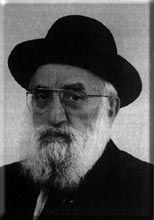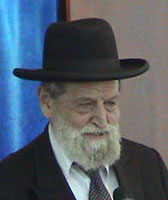Beit Midrash
- Torah Portion and Tanach
- Vayikra
- Tazria
- Sections
- Chemdat Yamim
- Parashat Hashavua
Mourning the dead and mourning one’s affliction with tzara’at are quite different. A dead person has died permanently (until techiyat hameitim, which is a new existence). In stark contrast, a metzora is expected to heal. This difference may be able to be explained by a halachic distinction between types of metzoraim: a musgar (quarantined until further determination) and a muchlat (one with a definite status of a full metzora). The difference between the two is that only a muchlat wears the ripped clothes and lets his hair grow (Megilla 8b). We can suggest that a muchlat is considered to be a permanent metzora in a way that makes him as one who died. The person, who is separated from society, has ceased to exist as we once knew him. Any recovery contains elements of rebirth.
This bold suggestion can explain another interesting halachic phenomenon. Using the same roots found in our pasuk, the Torah says that a kohen gadol must not rip his clothes or have his hair grow long, even if he is mourning the closest relatives. Yet, the gemara (Mo’ed Katan 15a) deduces from the pasuk "and the metzora" (Vayikra 13:45) that even a kohen gadol rips his clothes and grows his hair as if he is a metzora. The Malbim says that this is an application of the rule that fulfillment of a positive commandment (for a metzora to rip his clothes) pushes off a negative commandment (of a kohen gadol not doing so). In other words, while the prohibition is, in theory, in full force, the positive mitzva overcomes it. However, the pasuk could be telling us that while the kohen gadol, as a symbol of what is right and needed in the nation, cannot be disheveled, he loses his ability to impact positively when he has tzara’at. Thus, the negative commandment is not so applicable to this case.
To maintain our dignity and vitality we should avoid pitfalls in dealing with others. Even in times without tzara’at, inability to interact properly with society has similarities with death.

Mila and Tumat Leida
From Siach Shaul pp. 328-330
Rabbi Shaul Yisraeli zt"l | Nissan 5783

The Connection between the Eye and the Skin
Rabbi Yossef Carmel | Nisan 5767

To be a Free Nation in its Land
Rabbi Yossef Carmel | iyar 4 5781

























